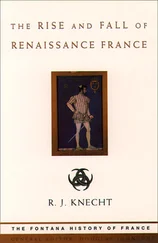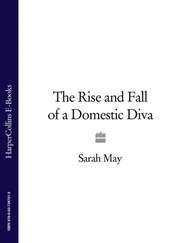This, then, was to be the Spanish pattern for the next thirty years of war. By scraping together fresh loans, imposing new taxes, and utilizing any windfall from the Americas, a major military effort like, say, the Cardenal-Infante’s intervention in Germany in 1634–5 could be supported; but the grinding costs of war always eventually eroded these short-term gains, and within a few more years the financial position was worse than ever. By the 1640s, in the aftermath of the Catalan and Portuguese revolts, and with the American treasure flow much reduced, a long, slow decline was inevitable. 30 What other fate was due to a nation which, although providing formidable fighters, was directed by governments which consistently spent two or three times more than the ordinary revenues provided?
The second chief cause of the Spanish and Austrian failure must be evident from the narrative account given above: the Habsburgs simply had too much to do, too many empires to fight, too many fronts to defend. The stalwartness of the Spanish troops in battle could not compensate for the fact that these forces had to be dispersed, in homeland garrisons, in North Africa, in Sicily and Italy, and in the New World, as well as in the Netherlands. Like the British Empire three centuries later, the Habsburg bloc was a conglomeration of widely scattered territories, a political-dynastic tour de force which required enormous sustained resources of material and ingenuity to keep going. As such, it provides one of the greatest examples of strategical overstretch in history; for the price of possessing so many territories was the existence of numerous foes, a burden also carried by the contemporaneous Ottoman Empire. 31
Related to this is the very significant issue of the chronology of the Habsburg wars. European conflicts in this period were frequent, to be sure, and their costs were a terrible burden upon all societies. But all the other states – France, England, Sweden, even the Ottoman Empire – enjoyed certain periods of peace and recovery. It was the Habsburgs’, and more especially Spain’s, fate to have to turn immediately from a struggle against one enemy to a new conflict against another; peace with France was succeeded by war with the Turks; a truce in the Mediterranean was followed by extended conflict in the Atlantic, and that by the struggle for northwestern Europe. During some awful periods, imperial Spain was fighting on three fronts simultaneously, and with her enemies consciously aiding each other, diplomatically and commercially if not militarily. 32 In contemporary terms, Spain resembled a large bear in the pit: more powerful than any of the dogs attacking it, but never able to deal with all of its opponents and growing gradually exhausted in the process.
Yet how could the Habsburgs escape from this vicious circle? Historians have pointed to the chronic dispersion of energies, and suggested that Charles V and his successors should have formulated a clear set of defence priorities. 33 The implication of this is that some areas were expendable; but which ones?
In retrospect, one can argue that the Austrian Habsburgs, and Ferdinand II in particular, would have been wiser to have refrained from pushing forward with the Counter-Reformation in northern Germany, for that brought heavy losses and few gains. Yet the emperor would still have needed to keep a considerable army in Germany to check princely particularism, French intrigues, and Swedish ambition; and there could also be no reduction in this Habsburg armed strength so long as the Turks stood athwart Hungary, only 150 miles from Vienna. The Spanish government, for its part, could allow the demise of their Austrian cousins neither at the hands of the French and Lutherans nor at the hands of the Turks, because of what it might imply for Spain’s own position in Europe. This calculation, however, did not seem to have applied in reverse. After Charles V’s retirement in 1556 the empire did not usually feel bound to aid Madrid in the latter’s wars in western Europe and overseas; but Spain, conscious of the higher stakes, would commit itself to the empire. 34 The long-term consequences of this disparity of feeling and commitment are interesting. The failure of Habsburg Spain’s European aims by the mid-seventeenth century was clearly related to its internal problems and relative economic decline; having overstrained itself in all directions, it was now weak at heart. In Habsburg Austria’s case, on the other hand, although it failed to defeat Protestantism in Germany, it did achieve a consolidation of powers in the dynastic lands (Austria, Bohemia, and so on) – so much so that on this large territorial base and with the later creation of a professional standing army, 35 the Habsburg Empire would be able to re-emerge as a European Great Power in the later decades of the seventeenth century, just as Spain was entering a period of even steeper decline. 36 By that stage, however, Austria’s recuperation can hardly have been much of a consolation to the statesmen in Madrid, who felt they had to look elsewhere for allies.
It is easy to see why the possessions in the New World were an area of vital importance to Spain. For well over a century, they provided that regular addition to Spain’s wealth, and thus to its military power, without which the Habsburg effort could not have been so extensively maintained. Even when the English and Dutch attacks upon the Hispano-Portuguese colonial empire necessitated an ever-increasing expenditure on fleets and fortifications overseas, the direct and indirect gains to the Spanish crown from those territories remained considerable. To abandon such assets was unthinkable.
This left for consideration the Habsburg possessions in Italy and those in Flanders. Of the two, a withdrawal from Italy had less to recommend itself. In the first half of the sixteenth century, the French would have filled the Great Power vacuum there, and used the wealth of Italy for their own purposes – and to Habsburg detriment. In the second half of that century Italy was, quite literally, the outer bulwark of Spain’s own security in the face of Ottoman expansion westward. Quite apart from the blow to Spanish prestige and to the Christian religion which would have accompanied a Turkish assault upon Sicily, Naples, and Rome, the loss of this bulwark would have been a grave strategical setback. Spain would then have had to pour more and more money into coastal fortifications and galley fleets, which in any case were consuming the greater part of the arms budget in the early decades of Philip II’s reign. So it made good military sense to commit these existing forces to the active defence of the central Mediterranean, for that kept the Turkish enemy at a distance; and it had the further advantage that the costs of such campaigning were shared by the Habsburg possessions in Italy, by the papacy, and, on occasions, by Venice. Withdrawal from this front brought no advantages and many potential dangers.
By elimination, then, the Netherlands was the only area in which Habsburg losses might be cut; and, after all, the costs of the Army of Flanders in the ‘Eighty Years War’ against the Dutch were, thanks to the difficulties of the terrain and the advances in fortifications, 37 quite stupendous and greatly exceeded those on any other front. Even at the height of the Thirty Years War, five or six times as much money was allocated to the Flanders garrison as to forces in Germany. ‘The war in the Netherlands’, observed one Spanish councillor, ‘has been the total ruin of this monarchy.’ In fact, between 1566 and 1654 Spain sent at least 218 million ducats to the Military Treasury in the Netherlands, considerably more than the sum total (121 million ducats) of the crown’s receipts from the Indies. 38 Strategically, too, Flanders was much more difficult to defend: the sea route was often at the mercy of the French, the English, and the Dutch – as was most plainly shown when the Dutch admiral Tromp smashed a Spanish fleet carrying troop reinforcements in 1639 – but the ‘Spanish Road’ from Lombardy via the Swiss valleys or Savoy and Franche-Comté up the eastern frontiers of France to the lower Rhine also contained a number of very vulnerable choke points. 39 Was it really worthwhile to keep attempting to control a couple of million recalcitrant Netherlanders at the far end of an extensive line of communications, and at such horrendous cost? Why not, as the representatives of the overtaxed Cortes of Castile slyly put it, let the rebels rot in their heresy? Divine punishment was assured them, and Spain would not have to carry the burden any longer. 40
Читать дальше












